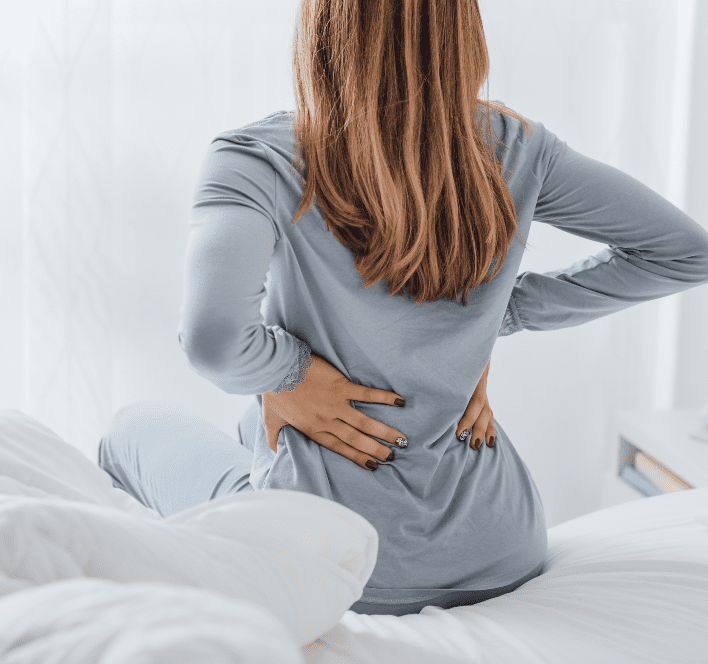Suffering from back pain can be extremely frustrating and debilitating. It not only prevents many people from engaging in work and other everyday activities but can also be tremendously painful. Back pain is considered the single leading cause of disability worldwide and can affect people of all ages. If you do suffer from back pain, it’s important that you understand your symptoms and treat them swiftly and effectively.
One of the most common back conditions is spinal stenosis. It affects 8 to 11 percent of the population and is most often diagnosed in individuals over 50 years old. We’ll discuss spinal stenosis and its symptoms, causes, and treatments.
What Is Spinal Stenosis?
The spine is a column of bones called vertebrae that supports our upper bodies and allows us to turn, twist, walk, and balance. Spinal nerves, which run through openings in the vertebrae and send signals from the brain to the rest of the body, are shielded from damage by the adjoining bone and tissue. If they become damaged, however, our mobility may become compromised.
Spinal stenosis is a narrowing of the small spinal canal, which contains and puts pressure on the nerve roots and spinal cord. A tightened space can cause the spine and nerves to become irritated, compressed, or pinched, which can lead to back pain and sciatica. A person with this condition typically feels severe discomfort in the legs, calves, or lower back when standing or walking.
Symptoms slowly progress over time as the nerves become more compressed, and you may experience:
- Balance problems
- Numbness or tingling in your hands, arms, feet, legs, or buttocks
- Leg or arm weakness
- Neck pain
- Lower back pain while standing or walking
Before treatment, patients with spinal stenosis typically feel pain when running, walking, or standing but feel relief when sitting.
What Causes Spinal Stenosis and Who Does It Affect?
While spinal stenosis may affect younger patients due to developmental factors, it’s more often a degenerative condition that affects people over the age of 50. Here are some of the reasons why a patient might be affected by spinal stenosis:
- Age: Spinal stenosis can occur naturally as you begin to age. Degenerative processes start to thicken your spinal tissue and bones as you get older, which innately compresses the nerves.
- Birth and developmental factors: Spinal stenosis can affect people who were born with a narrow spinal canal, a spinal birth defect, scoliosis, or achondroplasia.
- Unresolved medical conditions: If you have other back, neck, or spine conditions—such as Paget’s Disease, osteoarthritis, bony spurs, inflammatory spondylarthrosis, thickened ligaments, herniated disks, or spinal tumors—your risk of developing spinal stenosis increases.
- Spinal injuries: If you’ve suffered trauma as a result of an injury—such as a car accident or a slip and fall—you may have dislocated or fractured one or more vertebrae. Displaced bones from a spinal fracture may damage the contents of the spinal canal, and swelling can put pressure on the nerve roots and spinal cord.
If you think you may be at risk for spinal stenosis—or any other back, neck, or spine condition—but aren’t sure what treatment options are right for you, consider taking NJ Spine and Orthopedics’ free online Treatment Finder. In a few simple clicks, you’ll be able to discover the minimally invasive treatments that apply to your specific condition. It’s important that you discover and treat spinal stenosis as soon as possible to avoid further damage.
How Is Spinal Stenosis Treated?
Treatment options can vary depending on what stage of the disease you have, and range from pain relief medications and exercise to minimally invasive surgery. For short term pain relief, patients are usually advised to participate in physical therapy and take anti-inflammatory medications. If unsuccessful, doctors typically apply cortisone injections for longer-term pain relief and to identify specific causes of discomfort. Recommended surgery options, if needed, include a laminectomy or laminoforaminotomy.
Visit the Specialists at NJ Spine and Orthopedic
If you’re suffering from back pain and fear that you may have spinal stenosis, consider visiting the expert medical team at NJ Spine and Orthopedic. Your doctor will start by looking at your medical history, performing a physical exam, and observing your movements. After assessing your condition, we’ll explore all possible healing methods, beginning with conservative treatment options. If surgery is recommended, you can be sure that our doctors will focus on minimally invasive techniques that eliminate pain, discomfort, and dysfunction. We’ll help you decide what’s right for you so that you can return to the healthy, pain-free life that you once enjoyed.
Our award-winning team of board-certified neurologists, neurosurgeons, orthopedic specialists, and physicians utilize state-of-the-art equipment, innovative technology, and a patient-centered approach to help you on the road to recovery. Give us a call at (866) 272-9271 or complete our contact form today!

